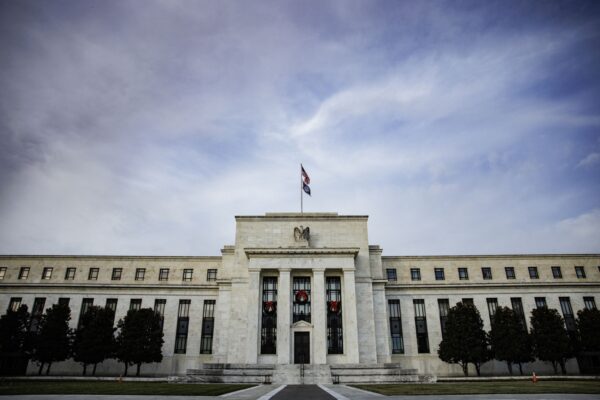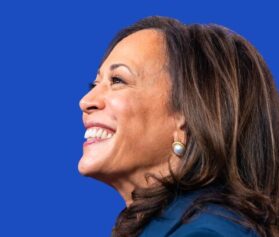By Steve Matthews and Reade Pickert
A hotter-than-expected U.S. inflation print would push the Federal Reserve closer to considering its single-largest rate hike in more than two decades.
The January consumer price index, due Thursday, is one of the most important data releases before the central bank’s March meeting, which Chair Jerome Powell has signaled will kick off a series of interest-rate hikes.

A reading above the projected 7.2% annual advance in prices — which would be the largest since 1982 — may pressure the Fed to consider its first half-percentage-point increase since 2000, instead of a typical quarter-point move.
Powell indicated last month he wouldn’t rule out a half-point hike, and after an unexpectedly strong January jobs report in which payrolls beat all estimates and wages jumped, traders are all the more convinced that the Fed will be aggressive. Based on Fed funds futures, they now see a one-in-three chance of a 50-basis-point hike, up from one-in-five before the employment data.
“Because the Fed hasn’t taken it off the table, or said it’s extremely unlikely, the market is going to run with it,” said Aneta Markowska, chief financial economist at Jefferies LLC. Given today’s strong labor market, “the Fed’s reaction function relies on one variable and that is inflation. These numbers are going to matter, big time.”
Even so, it’s a risky move for Powell, who’s awaiting confirmation to another four-year term at the helm. Critics say the Fed has been too slow to act and is now behind the curve in tackling inflation, and a half-point move could be perceived as an admission that they’re right.
And for President Joe Biden — whose party risks losing a razor-thin congressional majority in this year’s midterm elections — it’s all the more important that Powell gets it right. Biden’s approval ratings have fallen in recent months and many point to his administration’s stimulus package for supercharging prices.
What Bloomberg Economics Says…
“A 50bps hike is likely to receive serious consideration when Federal Reserve officials meet in March. CPI inflation will be another influential data point in that decision. With energy and food prices still rising, Bloomberg Economics estimates that January inflation continued to exceed the average monthly run rate consistent with an annual 2% inflation target. We expect inflation to peak in February.”– Anna Wong, Yelena Shulyatyeva, Andrew Husby and Eliza Winger
Excluding the volatile food and energy categories, core prices likely rose 5.9% in January from a year earlier, also the fastest in nearly four decades, according to the median forecast in a Bloomberg survey of economists. Still, there’s a lot of ways the numbers could shake out: estimates range widely from a monthly advance of 0.2% to 0.8% in the core.
Airfares and lodging away from home are two of the day’s biggest wild cards, as omicron and the related jump in Covid-19 infections curbed travel. Meantime, the two largest components of shelter — rent of primary residence and owners’ equivalent rent — are projected to post another solid advance in January, a theme that’s expected to continue over the coming months.
“We expect most of the softness to be concentrated in Covid-sensitive service prices,” said Robert Dent, senior U.S. economist at Nomura, which is predicting the Fed will hike 50 basis points. “Considering those components will likely rebound strongly as omicron fades, we believe the Fed will look through those price declines.”
The January CPI figures will also reflect an update to the relative importance of certain categories in the consumer basket. The weights, which were released Tuesday and are based on spending habits in 2019 and 2020, include changes like a bigger weighting for used cars and trucks and a smaller one for food away from home — a reflection of how the pandemic changed consumption patterns in the U.S.
Even if the January jobs report had showed a decline in payrolls, which many had anticipated, market watchers still expected a rate hike in March. But with the gain of 467,000, plus the biggest monthly gain in average hourly earnings in more than a year, traders raised the odds of a 50-basis-point move amid further concerns about the persistence of inflation.
Fed officials other than Powell, even including hawks such as St. Louis Fed President James Bullard and Kansas City’s Esther George, have recently stressed they prefer gradual moves. The Federal Open Market Committee in its December “dot plot” penciled in three hikes for all of this year, and those forecasts will get updated in March.
Fed Atlanta President Raphael Bostic, who’s been moderately hawkish as well, said in a CNBC interview he has penciled in three quarter-point interest rate hikes for this year, adding he’s “leaning a little toward four,” along with significant reduction in the Fed’s balance sheet.
While inflation is elevated, “I am very hopeful that we are going to start to see that decline,” Bostic said. “There is some evidence to suggest we are at the cusp of that. In the last couple of months, what we have seen is inflation not get worse on a month-to-month level. I’m hopeful that will translate into a slow decline as we move through the spring and into the summer.”
Fed policy makers are projecting that inflation, measured by a separate gauge focused on personal expenditures, will moderate to 2.6% by year end. But the recent broadening out of wage pressures could raise their concerns.
“They’ve pretty much signaled that they want to do this in a very kind of managed step-by-step fashion,” said Ethan Harris, head of global economics research at Bank of America Corp., who’s predicting a quarter-point move in March. “Now, could they do 50 at some point? Absolutely. If inflation doesn’t come down the way they’re hoping, 50 becomes a real possibility.”
More stories like this are available on bloomberg.com




